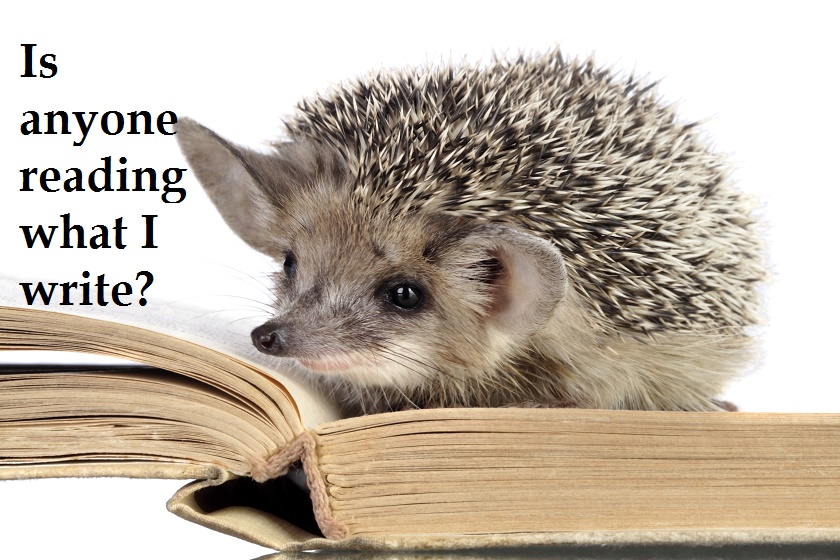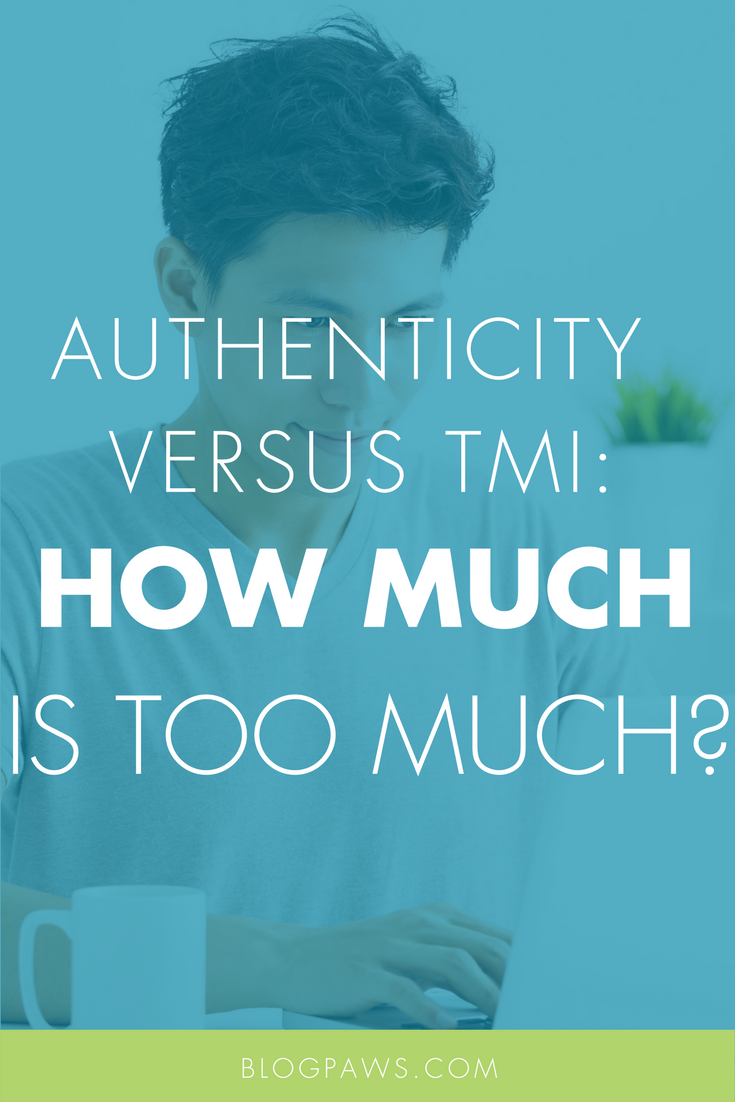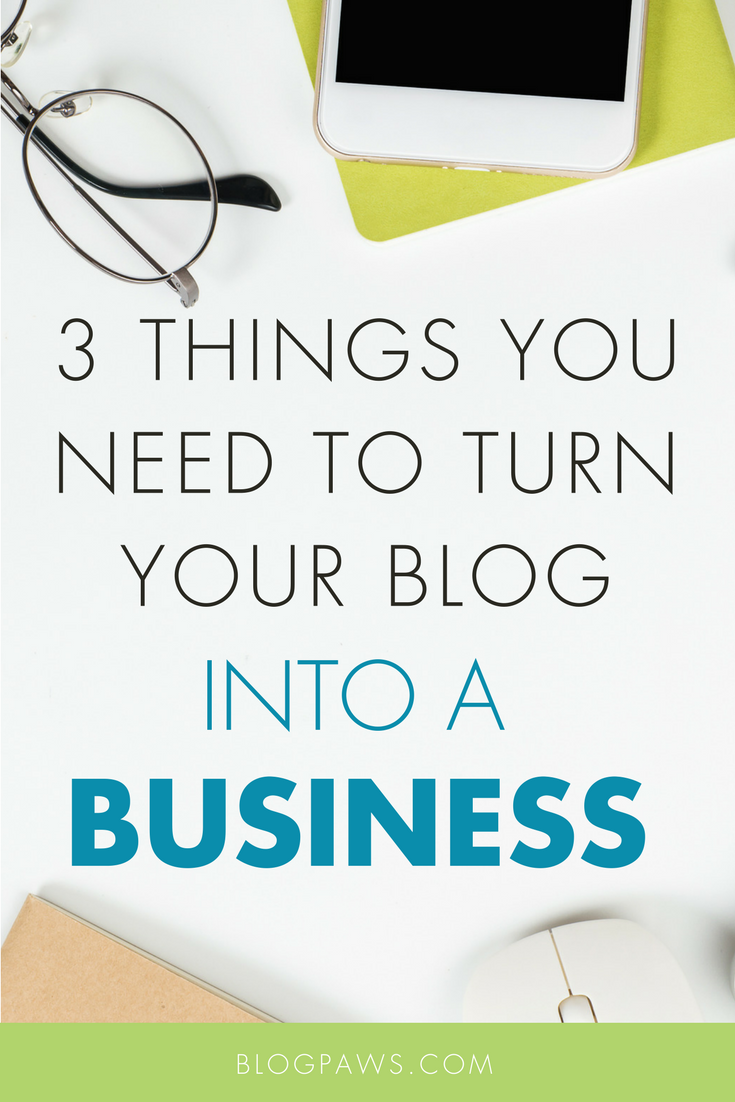The Passion Of Raw Feeding For Your Cats
Guest post by Robin A.F. Olson
What would happen to you if you ate a bowl of cereal every day, for every meal, for the rest of your life? Would you be bored out of your gourd? Would you stop wanting to eat? Do you think the cereal would help keep your teeth clean since you have to crunch it with your molars? Or would you be left jonesing for a toothbrush?
And what if you had a “condition” where your body only could get energy if you ate meat, not cereal. To be blunt, wouldn’t that suck? Wouldn’t you become agitated? Frustrated? Maybe even sick? Doesn’t this sound disgusting? Then why are you doing it to your cat.
It’s flat out common sense that because cats are obligate (“by necessity”) carnivores, their bodies NEED meat, bones and organs to 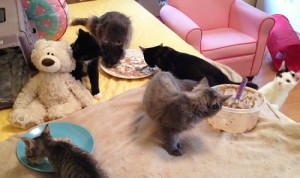 get energy. That’s how their metabolism functions at its best. Feeding them kibble, with high carbohydrates and fat, and low or poor quality proteins (especially grain-based proteins), result in all sorts of health issues ranging from obesity to IBD, allergies, elimination problems, vomiting, cancer and more. […and by the way, pet food companies, by law do not have to divulge the carbohydrate content of their cat food..seems odd that something so vital is not usually reported. You have to do a lot of calculations to sort it out if you’re feeding high carb. food, which most of us don’t have time to do.]
get energy. That’s how their metabolism functions at its best. Feeding them kibble, with high carbohydrates and fat, and low or poor quality proteins (especially grain-based proteins), result in all sorts of health issues ranging from obesity to IBD, allergies, elimination problems, vomiting, cancer and more. […and by the way, pet food companies, by law do not have to divulge the carbohydrate content of their cat food..seems odd that something so vital is not usually reported. You have to do a lot of calculations to sort it out if you’re feeding high carb. food, which most of us don’t have time to do.]
And does it clean their teeth? What do you think? They don’t have teeth that grind. Their teeth bite, rip and tear at prey. They can only gulp and swallow dry food whole. Don’t believe me? Answer me this: after your cat gobbles food, then regurgitates their kibble because they ate too fast doesn’t it often look the same way coming out as it does going in? It’s not crushed at all and the carbohydrates just coat the cats’ teeth with crud. Not very appetizing.
Before you get up in arms with me, I’m not saying anyone is a bad cat parent if they feed kibble. I used to feed total crap to my cats and I thought I was doing the right thing because the food came in a pretty bag with a photo of salmon steaks and fresh vegetables on it. What I ask is that you be open-minded and consider my words, then consider if it’s worth it to save a few bucks on cat food now and pay thousands of dollars in vet care later…or worse-be faced with euthanizing your cat at a premature age because they 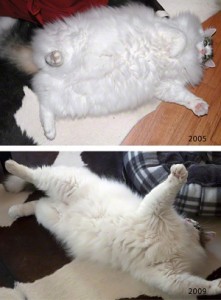 couldn’t process the junk they were being fed over the course of a few years and got terminally sick from it.
couldn’t process the junk they were being fed over the course of a few years and got terminally sick from it.
I learned the hard way about the dangers of dry food. I don’t want that to happen to you or your cat. I spent over $10,000 on vet care for ONE cat because his urethra blocked up repeatedly even though I had stopped feeding grained food about halfway into his illness and was feeding grain-free dry food. If only I had made a change in his diet to grain-free canned or raw he wouldn’t have kidney disease now AND had to have a P.U. surgery to boot.
So what’s a cat parent to do?
- Ditch the dry food and the “lab-created” foods you get only at the Vet. If the ingredients include corn, wheat, soy, oats, rice..that’s a hint it’s not appropriate for a cat.
- Do NOT “free feed” your cat, ever. It causes obesity and spikes in blood sugar. In the wild cats don’t even eat every day so if you feed your cats two or three times a day depending on their age and activity level, that’s plenty.
- Feed the highest quality, grain-free, low-carb., high-protein canned food with real animal proteins you can afford OR, better yet, feed a raw diet. Raw diet is raw ground meat, organs and bones of things like chicken, turkey, rabbit. Think: what could my cat kill in the wild? Odds are, they will like that best. Raw can be made at home or you can buy it commercially made in frozen or dehydrated form. Why is raw so great? It’s the closet thing to the perfect food: a dead mouse. Mice are protein, but they’ve eaten some grain and partly digested it. This is how cats CAN benefit from grain through the animals they eat. And here’s one of many great reasons to switch to raw: no smelly, overloaded, disgusting litter pan EVER AGAIN.
- Feed variety. Cats need change. Either rotate proteins if you feed raw or rotate proteins, brands, and types of canned food.
- Avoid feeding fish. It’s not natural to your cat’s diet. Once fed fish your cat will be tough to transition to other proteins that are more appropriate like chicken and rabbit.
There are terrific resources online where you can learn more about raw diets and more detail about why they’re so vital to your cat’s health. I hope you’ll take a few minutes to review these links below and let me know if you’ve ditched the dry. You’ll be blown away at the difference in your cat. Just give it two weeks and you’ll see (and no longer smell) results if not sooner.
- Catinfo.org
- Feline-nutrition.org
- CatCentric.org (helpful flow chart for how to transition your cat’s to a raw diet)
About the author: Robin A.F. Olson. Spencer, the Mascot of my blog Covered in Cat Hair just celebrated his 12th birthday. In 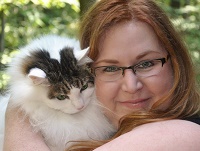 2005 he was overweight, pushing 16lbs, with a serious sinus issue that was a result of food allergies, free-feeding and carbohydrates and fat in his kibble. You can see by 2009 he’s slimmed down to a normal weight of 12 lbs and his wheezing problems were gone once he was transitioned to an appropriate diet. Robin A.F. Olson. Foster kittens at Kitten Associates, (K.A.) a non-profit cat rescue in Sandy Hook, CT enjoy their grain-free canned cat food. K.A. is one of the only rescues in the country that has a “No Kibble” policy. None of their foster cats get fed kibble during their foster care and adopters have to agree not to feed it after they bring their new kittens home.
2005 he was overweight, pushing 16lbs, with a serious sinus issue that was a result of food allergies, free-feeding and carbohydrates and fat in his kibble. You can see by 2009 he’s slimmed down to a normal weight of 12 lbs and his wheezing problems were gone once he was transitioned to an appropriate diet. Robin A.F. Olson. Foster kittens at Kitten Associates, (K.A.) a non-profit cat rescue in Sandy Hook, CT enjoy their grain-free canned cat food. K.A. is one of the only rescues in the country that has a “No Kibble” policy. None of their foster cats get fed kibble during their foster care and adopters have to agree not to feed it after they bring their new kittens home.

